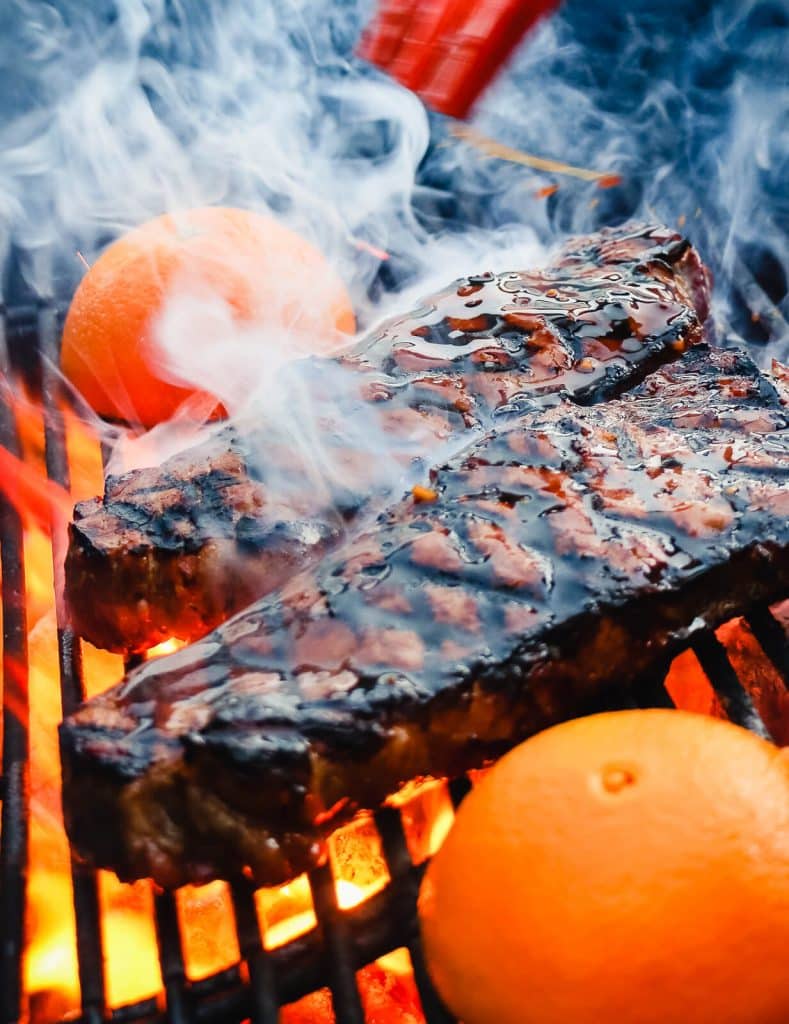Often debated in the carnivore community is the Kansas City steak vs New York strip steak. I’m going to discuss these two cuts in this blog, and add a third twist — the Boston Strip Steak.
You’ve obviously heard of the New York Strip Steak and the Kansas City Strip Steak, or you wouldn’t be here looking for the difference. I’m willing to bet however, that you haven’t heard of the Boston Strip Steak, and that’s a shame.
By the end of this blog you’ll be familiar with all three cuts and likely hungry enough to fire up the grill, in order to grill the perfect strip steak.
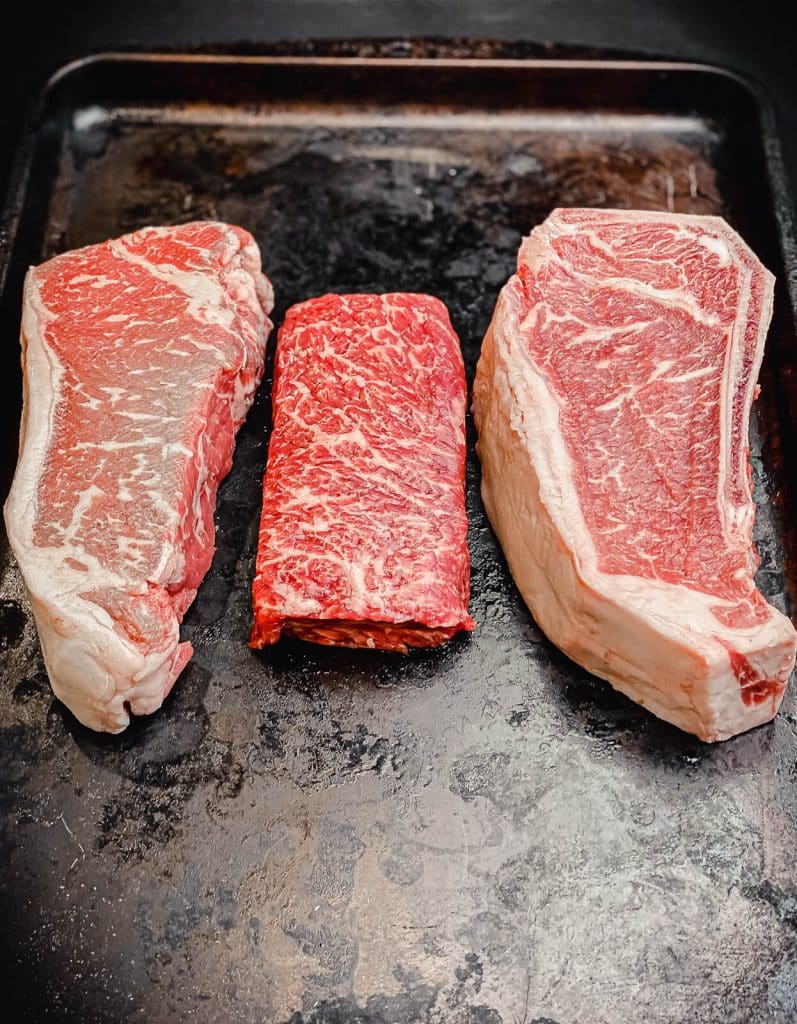
Where Does Strip Steak Come From?
Both the New York and the Kansas City strip come from the short loin section (also called the subprimal) of an animal. The short loin of course being located between the rib and the sirloin sections of a steer.
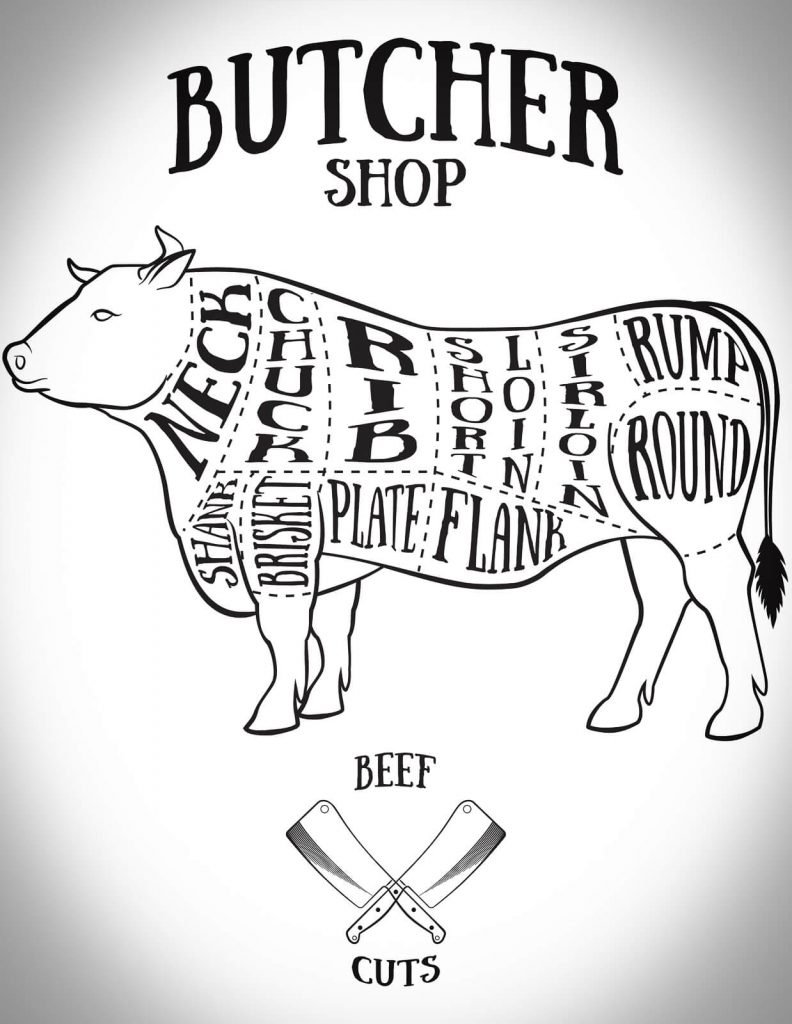
The short loin is the same section from which the t-bone, porterhouse and filet mignon steaks are harvested from.
What you’ll notice about strip steaks is they look very different from one end of the short loin to the other. The front end of the short loin (chuck end) producing what is often considered a more desirable cut of meat. Like the steak on the left below.
Steaks cut from the back end (nerve end) of the short lion are not as desirable. They are notorious for the large, tough nerve they have running through them; like the steak on the right below.
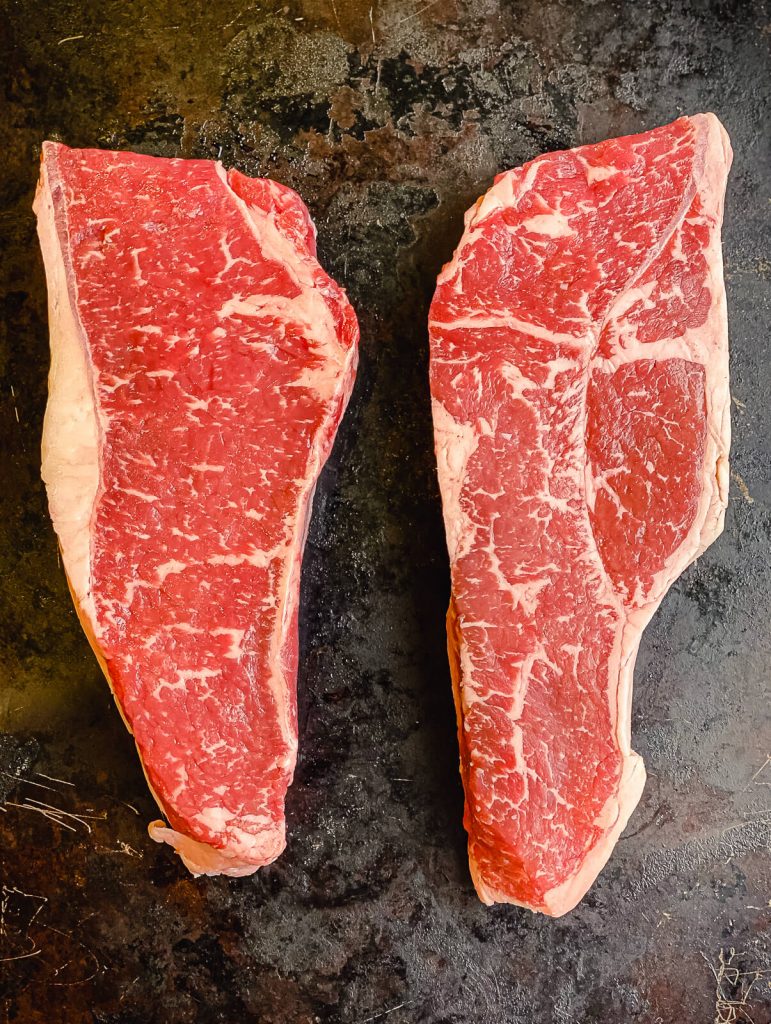
Beware, some meat purveyors charge the same price per pound for every steak cut from the short loin. Paying chuck end prices for nerve end strip steaks seems almost a crime. Other places will discount the nerve end steaks, and mark them as “End Cut.” This provides better value to the customer.
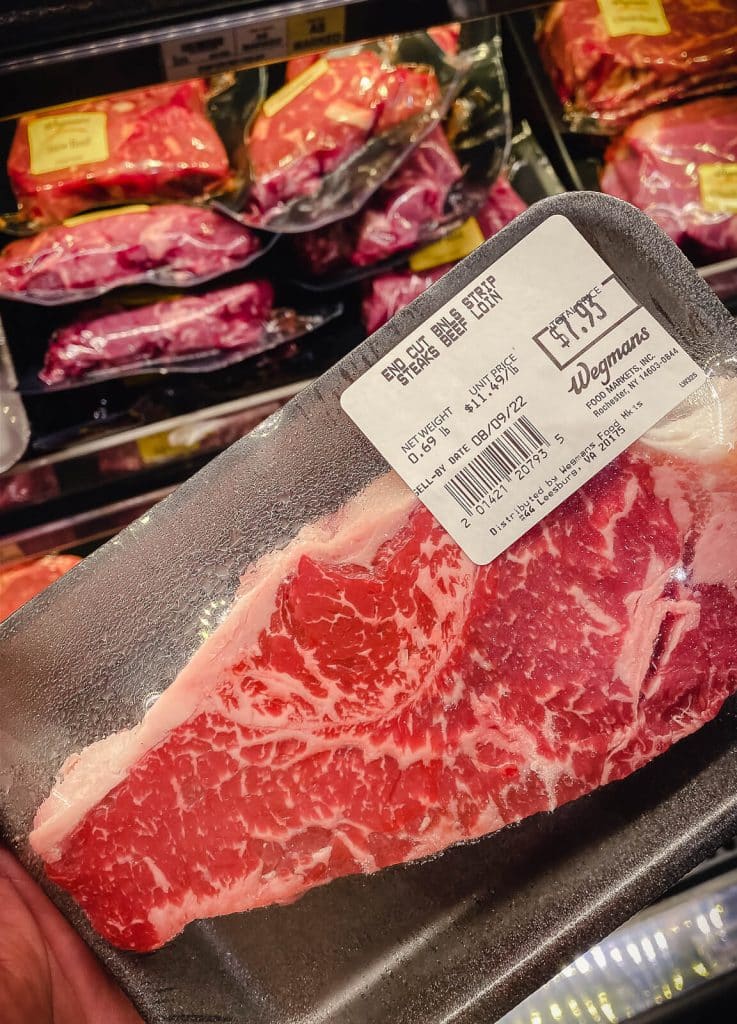
Boston Strip Steak
The Boston strip steak on the other hand, doesn’t come from the same section of the steer. Instead, it’s cut from the sirloin subprimal. More specifically, a cross cut from the bottom sirloin flap.
One might think that because it’s cut from the sirloin, it may be tough or lack marbling. Neither are true. This well marbled and surprisingly tender cut of meat is perfect for the grill or cast iron.
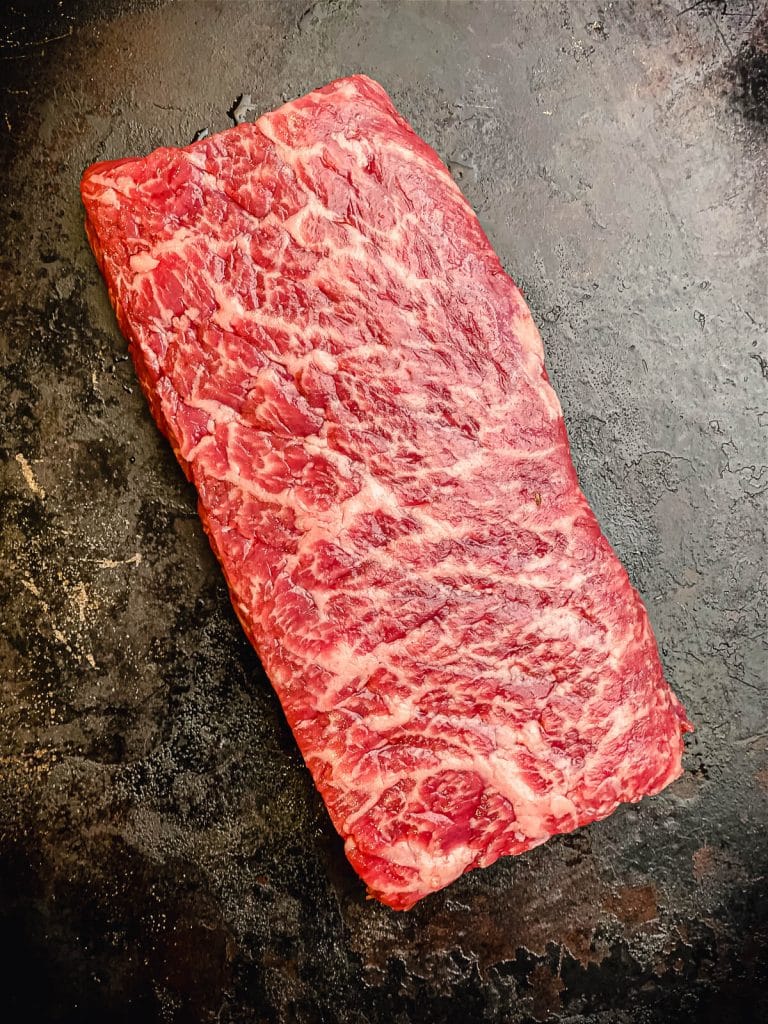
First introduced and trademarked as “The Boston Strip Steak” in 2014 by the Boston Butcher himself, Carlo Crocetti; owner of Crocetti’s Butcher Shop in East Bridgewater Massachusetts, the Boston Strip steak is a crowd favorite in the restaurant scene throughout New England.
Because of how this steak is cut, it benefits from being cooked quickly, over very high direct heat. Caveman style isn’t something I do often, but this cut does well in that environment.
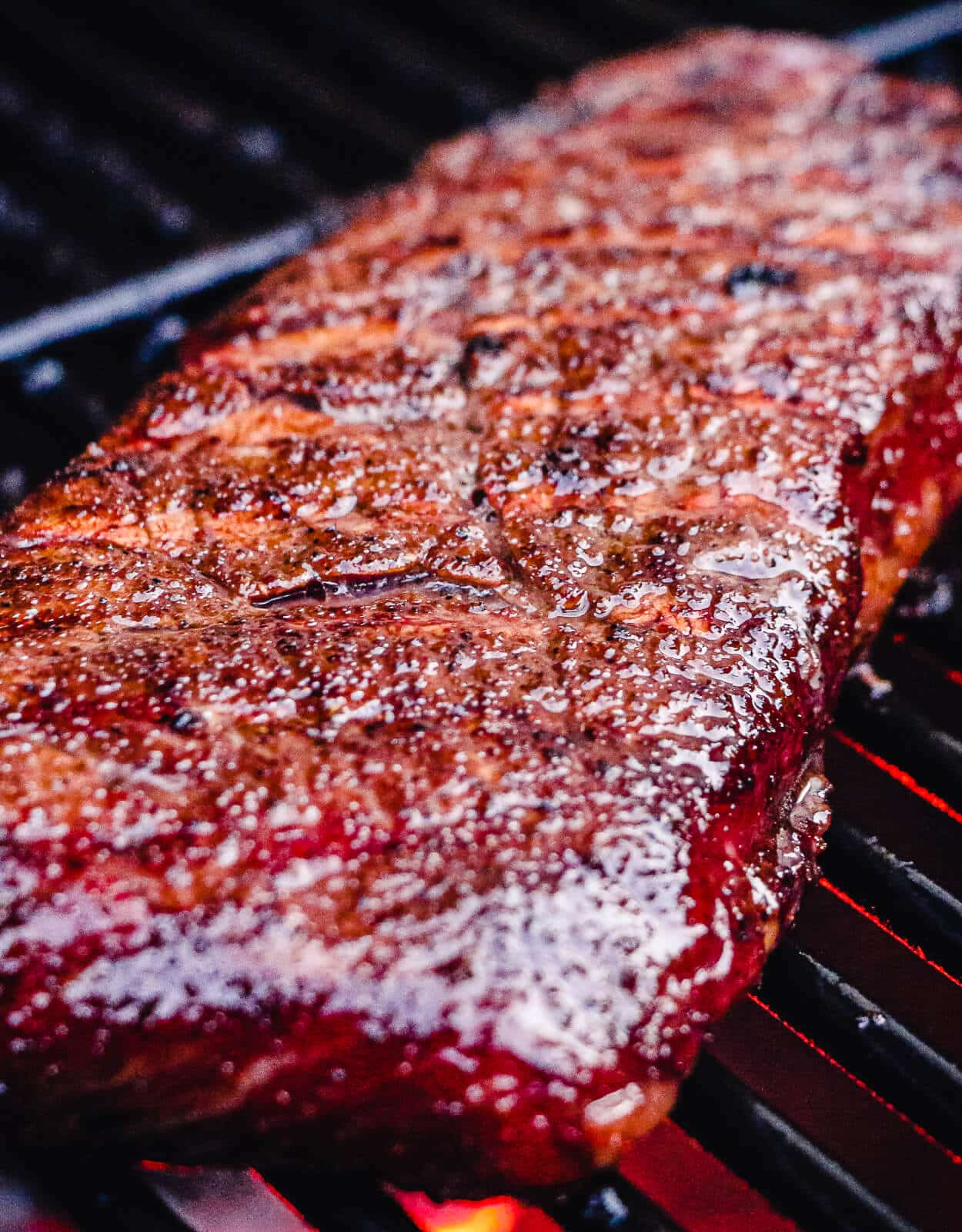
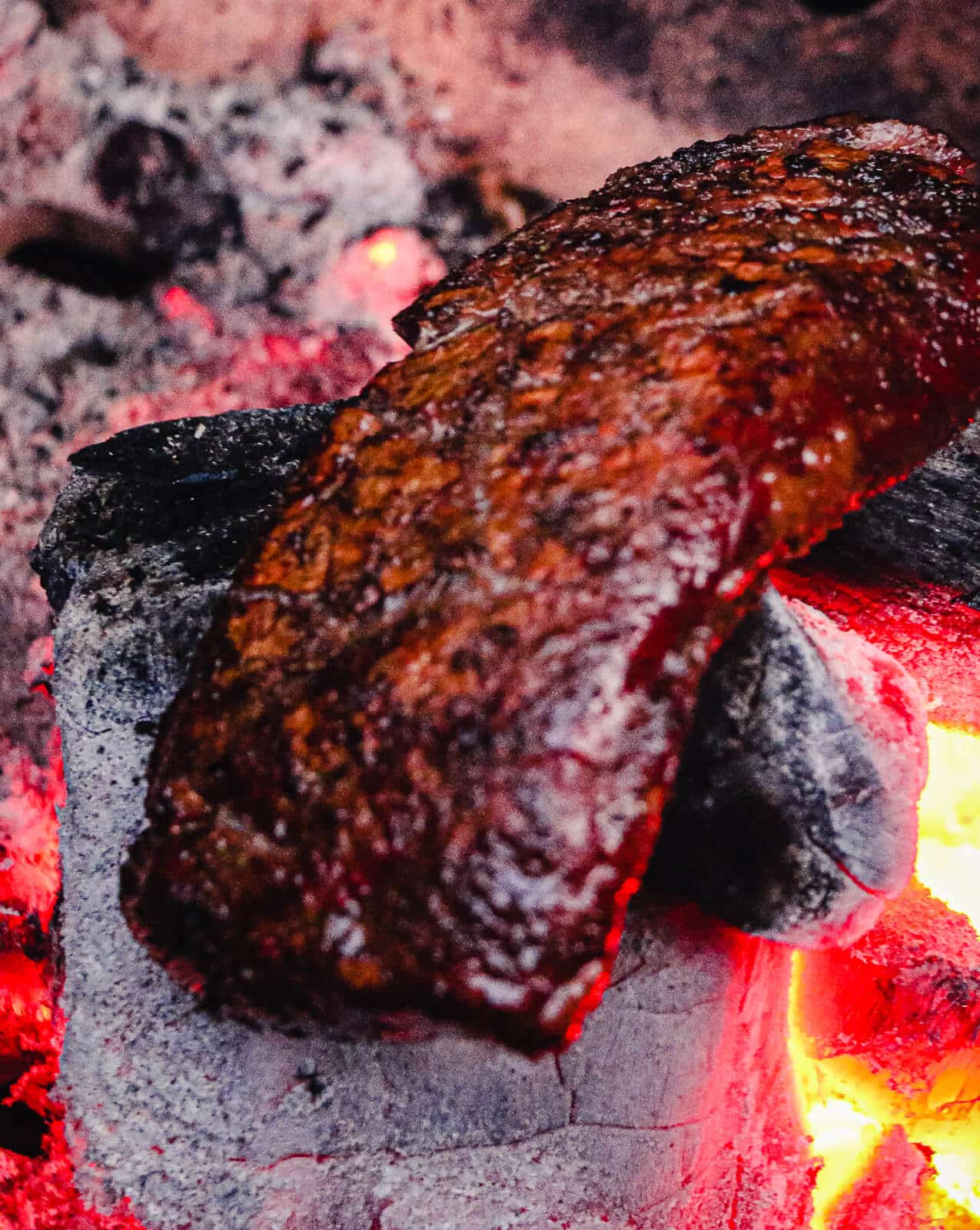
What’s The Difference Between the New York Strip Steak and The Kansas City Strip Steak?
Now that you know how the Boston Strip steak differs from the other two, let’s take a look at what the difference is between a New York and Kansas City strip streak. This should go quickly…
In the battle of Kansas City steak vs New York strip steak, there is little to no difference between the two.
They are the same cut of meat. The cut originated in Kansas City and gained popularity when chefs in New York started calling it the New York strip, but they are in fact, the same cut.
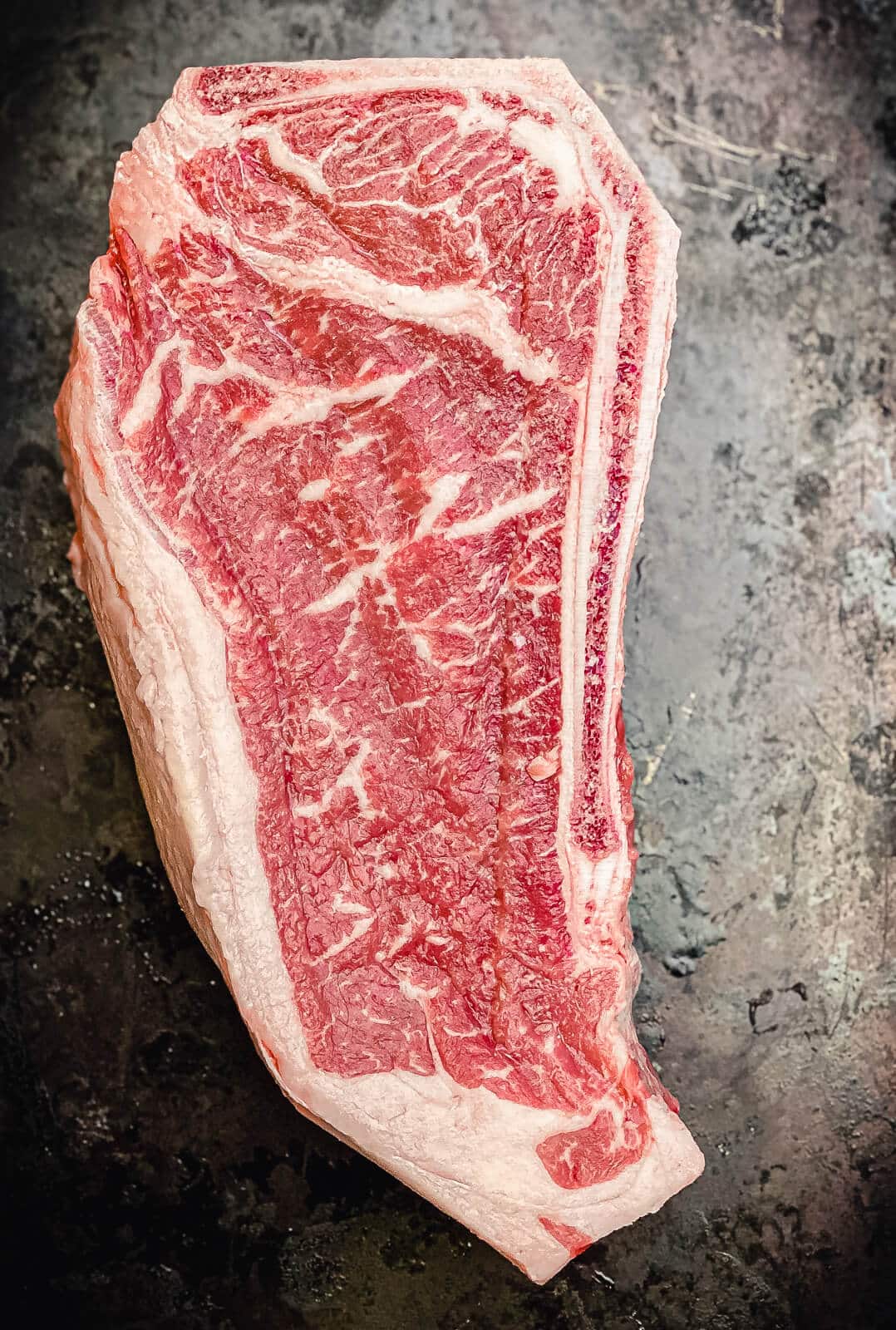
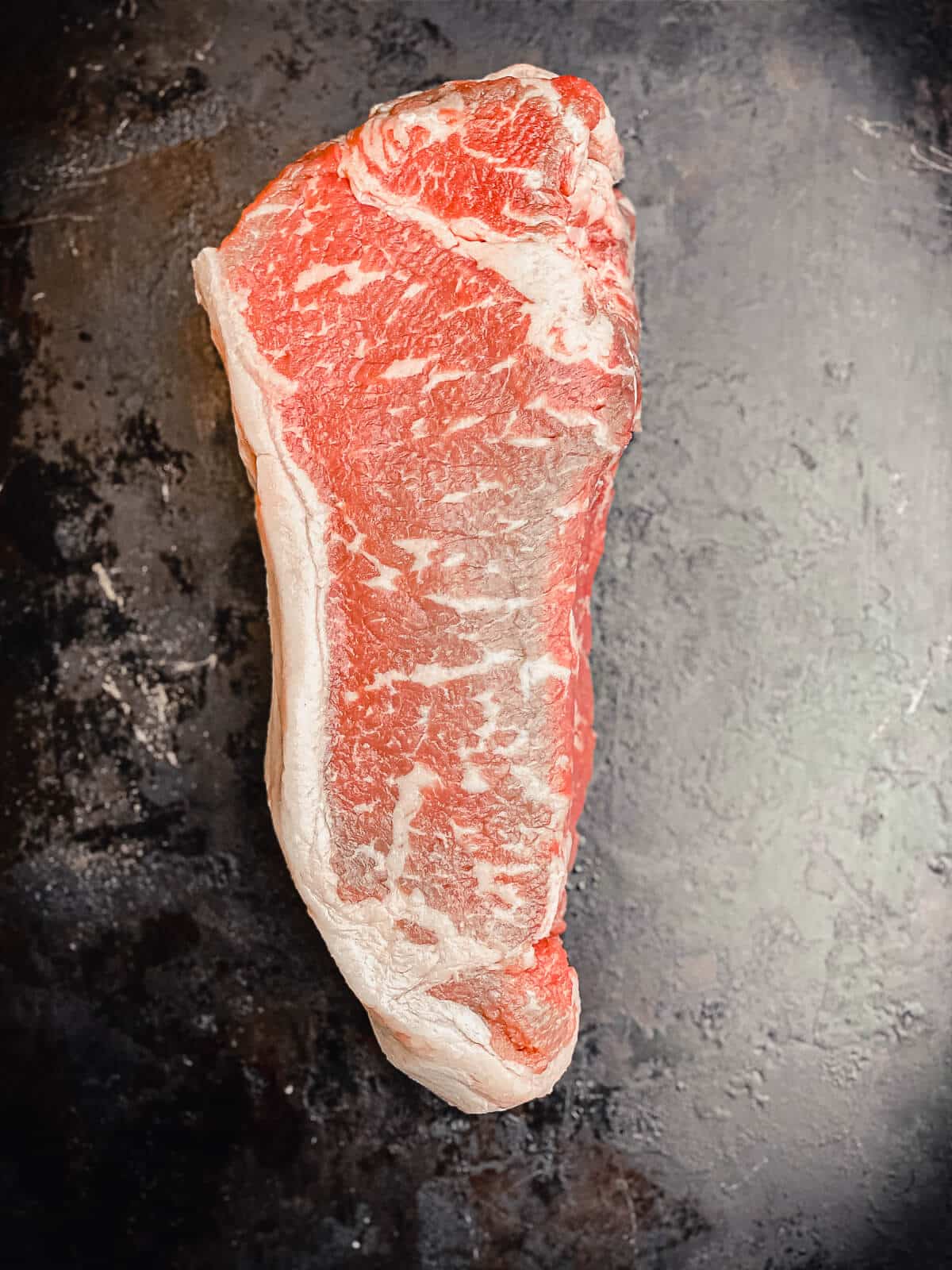
Much like the Boston strip steak is so popular in New England, the New York strip steak is more popular in the New York and surrounding areas due to the long history of the cut, and great PR. In the Western US however, the Kansas City strip is usually the term used for that cut.
Having established that, over time there have been some that claim there is a difference between the New York and Kansas City strip.
Are There Any Differences Between the New York Strip and the Kansas City Strip?
Over time, some subtle differences have come to be recognized. For example, the Kansas City strip usually has a portion of the bone attached to it, like these below from my buddy Evan Lobel at Lobel’s Butcher Shop in Manhattan.
Sometimes the portion of bone is small, near one end, like the steak on the left. Other times it’s larger and “L” shaped like the steak on the right.
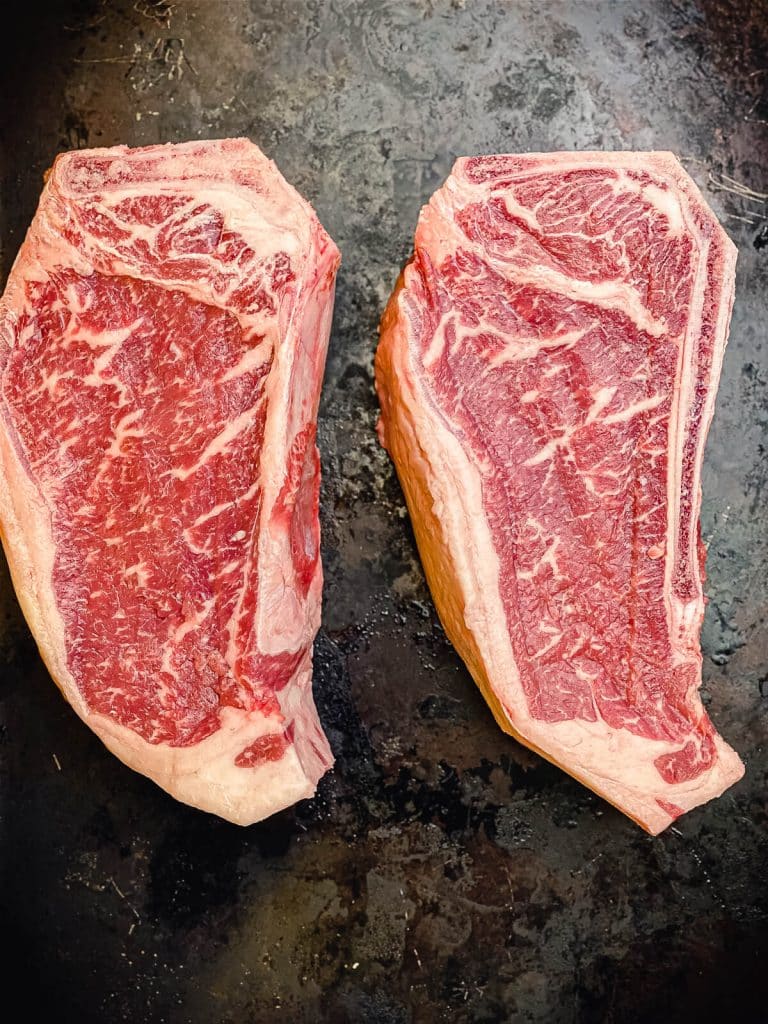
The presence of the bone is really the biggest distinction between the two, though there are a few other minor details that influence determination.
For example, some would say the Kansas City steak is cut thinner than the New York strip steak. That’s of course not always the case, but it’s not unusual to hear that logic applied.
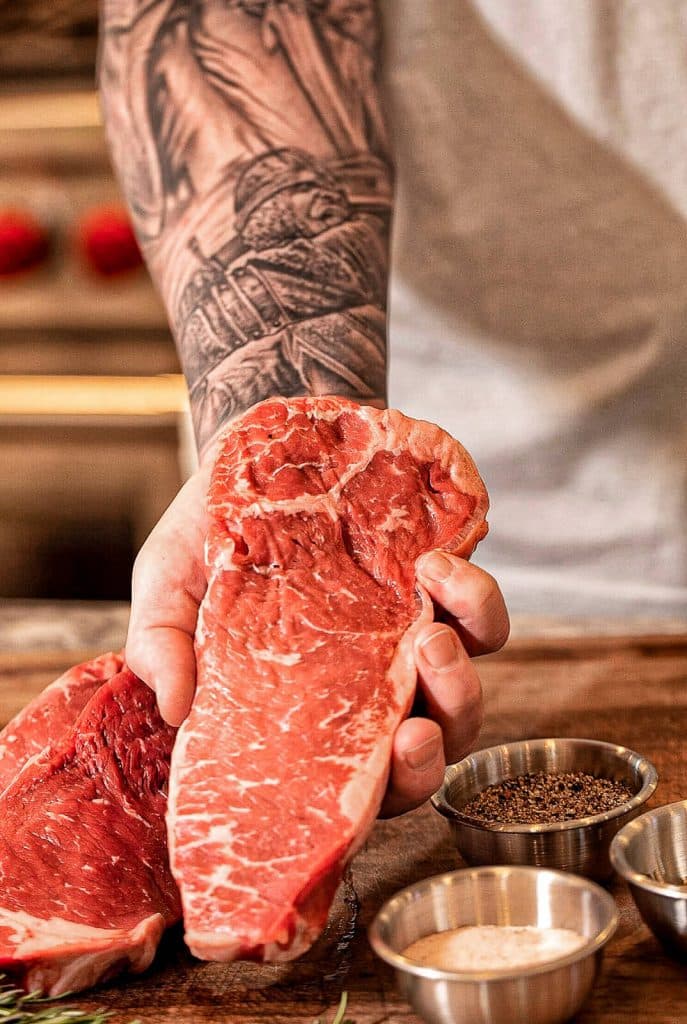
Another slight nuance is the presence of the tail section on the steak. Arguments have been made both ways as to whether or not the presence of the tail makes it a New York strip or a Kansas City strip.
More often than not, what is largely considered a New York Strip isn’t served with the tail section attached.
Finally, the strip of fat along the edge that is largely synonymous with the strip steak. It’s argued that the Kansas City strip will have a thicker strip of fat, as compared to a more closely trimmed New York strip.
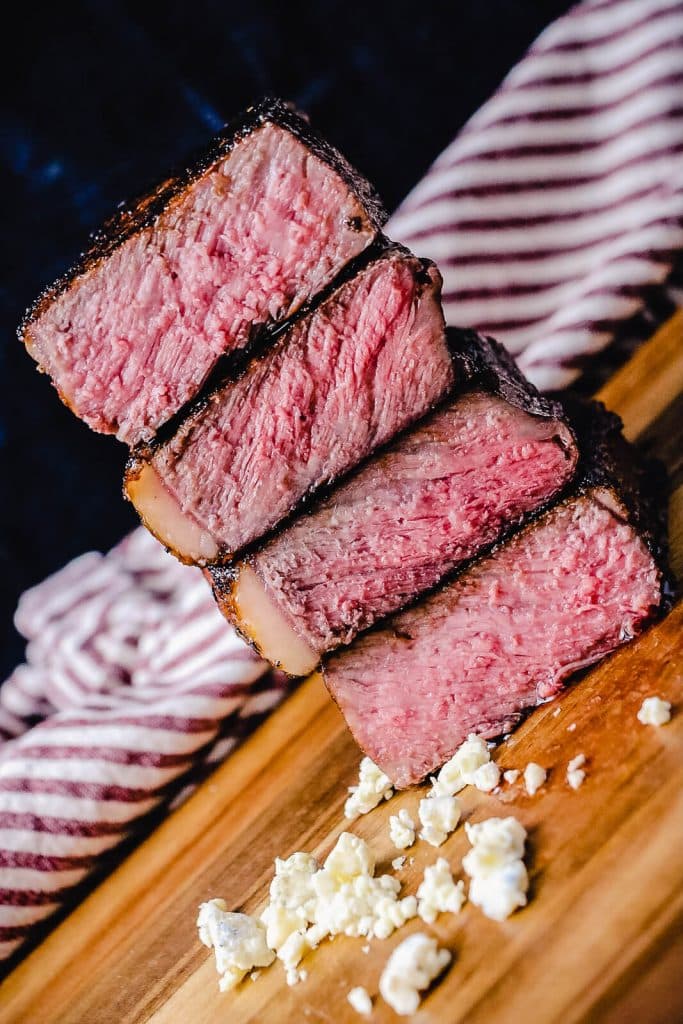
Kansas City Steak vs New York Steak
Ok, so let’s run down the simple (and controversial) differences between the Kansas City strip and the New York Strip.
- The Kansas City strip bone attached, New York does not.
- The New York strip typically has the tail section removed, the Kansas City does not.
- The Kansas City strip is served with a thicker portion of fat along the edge, whereas the New York strip is trimmed tighter to the meat.
- The New York strip is usually cut thicker (> 1.5″ thick) than the Kansas City strip (<1.5″ thick)
Summary of Strip Steak Differences
As you can tell, the Boston strip steak is very straightforward and unique. And, incredibly…incredibly tasty. If you haven’t had one, I highly recommend them.
Beyond the Boston strip steak, the determinations are very subjective and sometimes confusing. What if you have a strip steak with a bone, but no tail. What if you have a tail, but no fat cap?
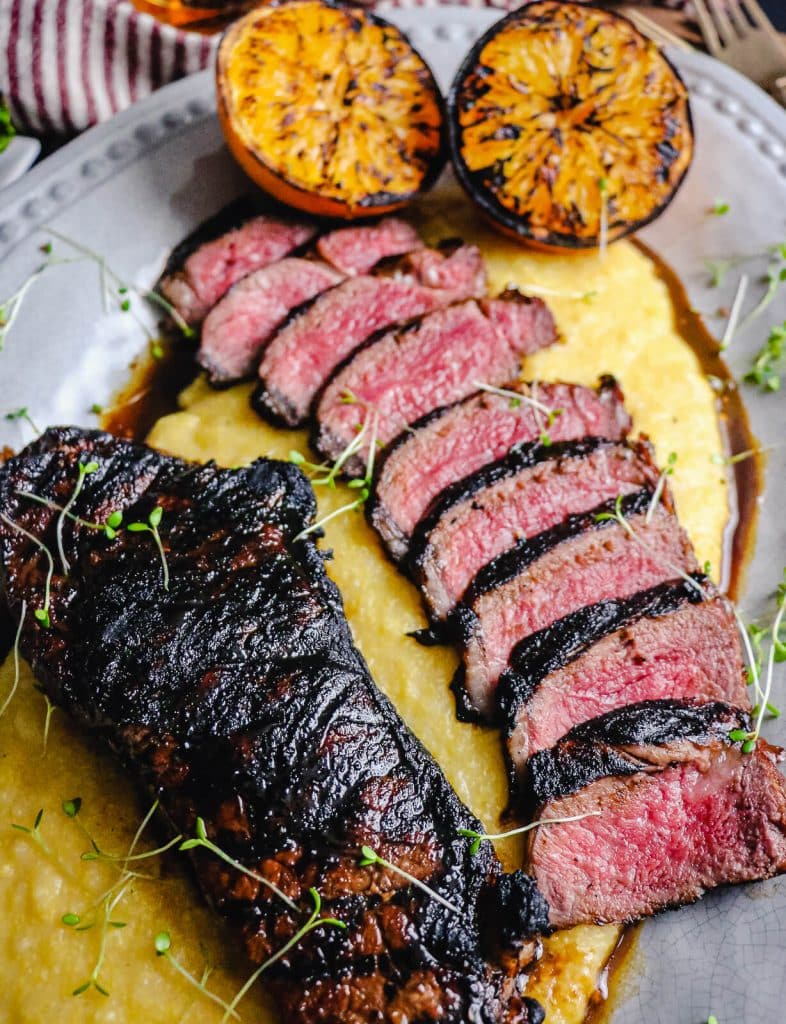
You see the issue here right? Purists on either side of the argument have steadfast rules they apply to categorizing a steak. That said, there’s a lot of gray area. In fact, it’s mostly a gray area. It’s rare to find a steak that squarely fits into one category or the other.
At the end of the day, all three are delicious steaks, and all deserve a place in the center of your plate. Or to the side of it next to a pile of garlic mashed potatoes.


